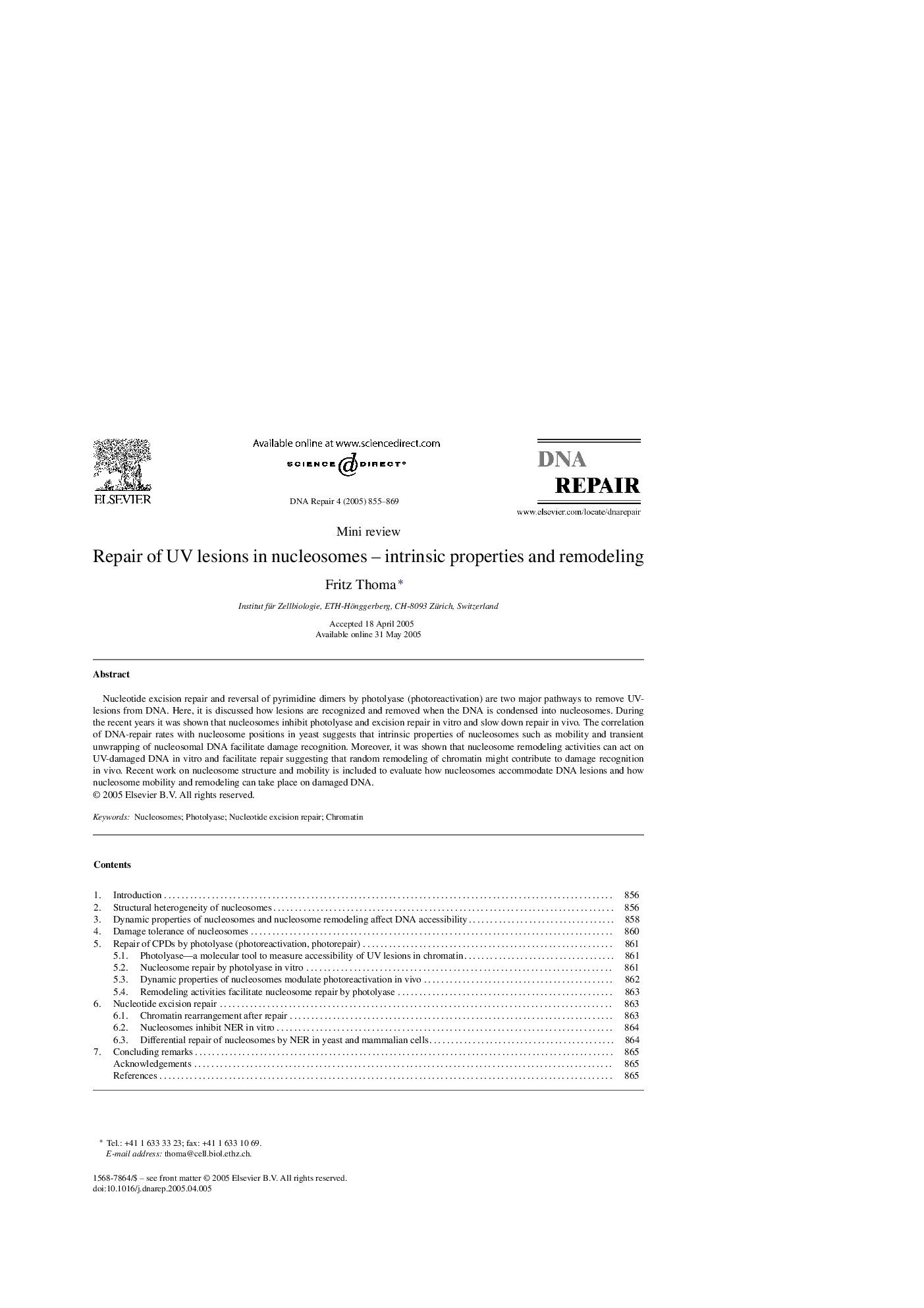| Article ID | Journal | Published Year | Pages | File Type |
|---|---|---|---|---|
| 10823644 | DNA Repair | 2005 | 15 Pages |
Abstract
Nucleotide excision repair and reversal of pyrimidine dimers by photolyase (photoreactivation) are two major pathways to remove UV-lesions from DNA. Here, it is discussed how lesions are recognized and removed when the DNA is condensed into nucleosomes. During the recent years it was shown that nucleosomes inhibit photolyase and excision repair in vitro and slow down repair in vivo. The correlation of DNA-repair rates with nucleosome positions in yeast suggests that intrinsic properties of nucleosomes such as mobility and transient unwrapping of nucleosomal DNA facilitate damage recognition. Moreover, it was shown that nucleosome remodeling activities can act on UV-damaged DNA in vitro and facilitate repair suggesting that random remodeling of chromatin might contribute to damage recognition in vivo. Recent work on nucleosome structure and mobility is included to evaluate how nucleosomes accommodate DNA lesions and how nucleosome mobility and remodeling can take place on damaged DNA.
Related Topics
Life Sciences
Biochemistry, Genetics and Molecular Biology
Biochemistry
Authors
Fritz Thoma,
